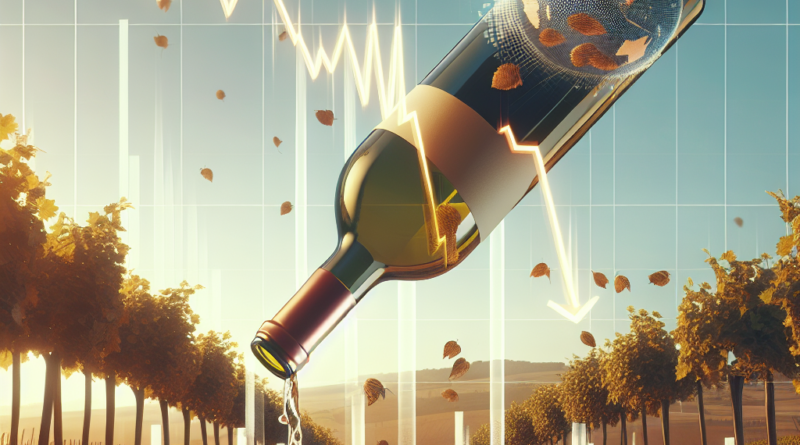Why is the Wine Market in Freefall?
Champagne vs.
Wine: A Shift in Celebration
Champagne has long been synonymous with celebrations, far more than any other type of wine.
However, Alexandre Ricard, head of Pernod Ricard, may find it justified to toast with a celebratory red after the French beverage group’s recent agreement to sell off the majority of its wine business, which includes well-known brands like Jacob’s Creek and Campo Viejo.
This strategic decision comes at a time when global wine consumption is on a steady decline.
Pernod’s Strategic Sale
Pernod is divesting its wine operations in Australia, New Zealand, and Spain—regions that collectively produce an astonishing 90 million liters annually.
The deal has been made with a consortium of investors, headed by Bain Capital, which earlier this year acquired the Australian wine producer Accolade Wines, known for its Hardys label.
It has always been likely that Pernod would exit the low-margin wine sector; it was simply a matter of timing.
The company primarily focuses on high-margin spirits such as Chivas Regal whisky and Absolut vodka.
Notably, British competitor Diageo made its own foray into wine in 2015.
Profit Margins and Trends
Details surrounding the sale remain scarce.
However, Pernod’s operational margins in the wine sector—though never disclosed—are likely only around half of the group’s average of 27.6%, according to Edward Mundy, an analyst at Jefferies.
In 2023, Pernod’s wine production saw a 2% decline compared to an impressive 11% growth in its international spirits brands.
In fact, wine makes up a mere 4% of the company’s annual net sales of €12.1 billion.
Global Wine Consumption Decline
Global wine consumption has been in decline since peaking at approximately 25 billion liters in 2007, falling to about 22.1 billion liters last year, as reported by the International Organization of Vine and Wine (OIV).
Younger consumers are increasingly favoring cocktails or higher-alcohol spirits.
Additionally, rising wine prices—resulting from producers passing on increased costs—coupled with a growing trend of health consciousness, have led to an overall decrease in alcohol consumption.
Market Outlook
As a result, global wine production in 2023 outpaced consumption by 7%.
Research group IWSR expects this trend to continue, predicting an average annual decline of 1% in wine volume through 2028.
Even with price increases, no substantial growth is anticipated, though certain market segments, like rosé, show more resilience.
Challenges in Australia
The Australian wine market has faced particularly challenging conditions, especially after China imposed tariffs on Australian wine imports in 2020.
While these tariffs were lifted this year, the damage had already led to significant excess supply.
By mid-2023, Australian wine stocks were reported to be 16% higher than the decade-long average.
The buyer of Pernod’s wine brands is expected to reduce overlap with Accolade.
The deal is subject to competition approval.
According to Trevor Stirling from Bernstein, the company will hold a 27% market share in Australia.
If regulatory authorities give their assent, further agreements in the sector are anticipated.
© The Financial Times Limited 2024.
All rights reserved.
No part of this article may be redistributed, copied, or modified in any form.
The Financial Times is not responsible for the accuracy of this translation.
Money.it holds limited republication rights for select Financial Times articles.
This is not a real-time feed of Financial Times content.




